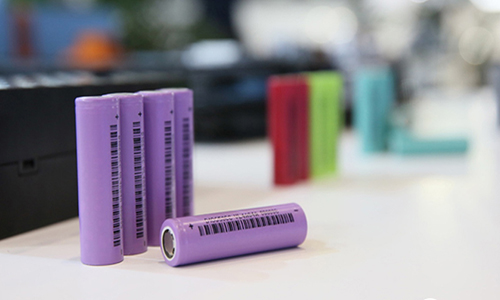Types of Batteries used in Robotics-Introduction and Application
Mar 30, 2020 Pageview:1217
Robot or Robota is a Czech word that refers to a mechanical item that is useful to serve its slave. Today, humans are using these mechanical devices to perform specific tasks. They can perform these physical tasks for they are equipped with software-based intelligence. Some of their functionalities are sensing and decision-making.
Robotic vehicles are an example of robotic designs that move around performing physical tasks. They require power and motor when in motion. However, a balance is needed between the weight of the device, motor and battery because the three components are interconnected. Therefore, one has to apply experimentation and mathematics when balancing them. In view of that, you have to choose the appropriate battery for the motor and load.
What are the Types of Batteries most Suitable for Robots?
The following are different types of battery technology that are available for robotic projects.
Alkaline Battery
These are use and throw batteries with 1.5V and 9V ratings. There are different varieties for 1.5V, namely; AA-1000 mAh, AAA-1000 mAh, C-2000-2500mAh, and D 2000mAh, while the 9V battery ranges from 50-500 mAh. The alkaline batteries are readily available at low cost, but they are not durable and discharge quickly.
SLA/Lead-Acid Batteries
These batteries are less expensive and applicable in high capacity energy requirements. They don't require any maintenance and can undergo several cycles of charge and discharge. Further, these batteries are easy to charge and can output huge current, are low cost and widely available. They are heavy for mobiles, thus not suitable for hobby robots.
Nickel-Metal Hydride Batteries (Ni-MH)
These are rechargeable batteries with voltage rating is 1.2V and a wide range of 600mAh-3300mAh. They are expensive, durable, and their current capacity is high.
lithium polymer batteries (Li-Po)
They are common in most robotic applications. They have a lightweight, relatively good capacity and high discharge rates. However, these batteries have incremental voltage ratings of 3.7V.
lithium-ion batteries (Li-Ion)
These cells are rechargeable and are similar to those used in cameras. They come with 3.7V rating. The batteries have a high capacity, readily available and lightweight.
How do you Choose a Battery used in Robotics?
Batteries are used to run robotic devices’ motor; thus, you need to select batteries with appropriate specifications. There are several types of batteries that can be used to power the motor. These are the Li-Ion, Li-Poly and NiMH. The following are specifications considered when selecting a battery for a robot.
Capacity Rating: it’s the amount of power that a battery can deliver. A battery used in robots should have an average current of 2A and 15 minutes of minimum working time. Therefore the required capacity is 500mAh.
Weight: The battery should be light like 150g.
Size: it should be small in size.
Maximum Discharge Current: 5A is enough for this device.
Nominal Voltage: the robotic motors have a nominal voltage of 6V, and the electronic circuits require a regulated 5V supply, and for that reason, 7V is the absolute minimum.
Others: The battery should have the possibility of fast charging.
Types of Robots and their Suitable Batteries
There are different types of robots, and their appetite for power is also not the same. They include;
Mini-Sumo Robot: The robot is involved in sumo-competitions, weighs 500g, and uses brushless or 2 DC motors as well as other moving parts for levering the opponent. Although the competition is short, the device remains operational for more than 15 minutes.
An example of a battery that fit these specifications is Li-Po Hyperion G5 50C 2S 850 mAh. It has the lowest volume, weight and offers the best performance. However, it has low voltage.
Minimum voltage is 6V, and Nominal voltage is 7.4V (3.7V per cell), Maximum discharge current is 21A, the capacity of 850mAh. Further, the battery has a dimension of 75x27xa4 mm, weighs 48g, a volume of 28.4 ccm and retails at $10.
Quadrocopter: This is a lightweight flying robot. The 45X45 cm drone uses 4 BLDC motors, has radio transceiver, and small electronic circuits. Therefore, the robot requires a power source that delivers a higher amount of energy at a short time.
Li-Poly turnigy Graphene is the best option due to its higher maximum discharge current margin.
Small AGV
This is an automated guided vehicle fitted with a camera, single-board computer and several sensors on the board. The vehicle has 4 wheels, and 2 of them are by driven by DC motors. The equipment is used to scan or inspect the shape of the rooms in several buildings at a lower speed.
The appropriate battery choice for this device is Li-Ion 3S2P battery pack due to the high energy requirement.
How do you use a Battery used in Robotics Properly?
Batteries are used on robot and controller to maintain data stored in the devices when it gets de-energized. The data stored in the robot arm and controller are different but equally important. The data in the robot maintains the gadget's encoder pulse values of every axis, thus controlling its positional data.
So, you need to remaster the robot when the robot arm’ batteries fail. Thus, robots have to undergo an annual replacement that ensures batteries are charged and functional.
On the other hand, batteries are used in a robotic controller to support the internal memory even when the equipment doesn't have power. The battery sustains programs IO configurations, system variables, and installed software, among others. Any battery fails to hours of downtime and loss of data.
Therefore, annual battery replacement and regular back-ups of the data in the controller should be done as part of preventive maintenance. Choose your robotic system batteries based on model and manufacturer. Go for a specialized lithium battery that has brand-specific connectors.
Further, every robot has a maintenance manual that confirms the appropriate batteries to be used with this device. Therefore it's imperative to look at the manual for more information on how to perform a battery replacement. It's crucial to know where these batteries are located and how you can complete the replacement.
- Prev Article: Electric Trolling Motor Lithium Battery-Type and Cycle Life
- Next Article: Medical Lithium Ion Battery Import-Choice and Shipment
Leave Message
Hottest Categories
-
Hottest Industry News
-
Latest Industry News














